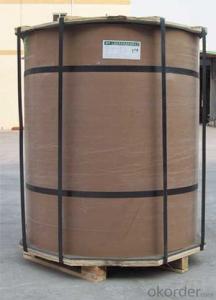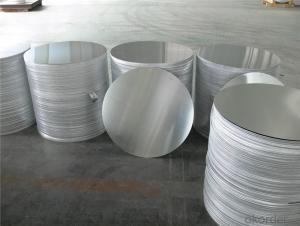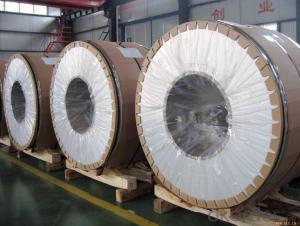Continuous Casting Aluminium Strips for Food Cookware
- Loading Port:
- Shanghai
- Payment Terms:
- TT OR LC
- Min Order Qty:
- 2 m.t.
- Supply Capability:
- 20000 m.t./month
OKorder Service Pledge
OKorder Financial Service
You Might Also Like
Item specifice
1.Structure of Continuous Casting Aluminium Strips for Food Cookware
Continuous Casting Aluminium Strips for Food Cookware are widly used in decoration field. For the painting, it depends on the using evironment. If you use in the open air, we recommend the PVDF coated aluminium coils. This kind of painting can last 15-20 years. If you use in the room, we recommend PE coated aluminium coils. The price is much more competitive.
2. Main features of Continuous Casting Aluminium Strips for Food Cookware
a.Competitive price---We have our own mills and can produce mill finished aluminium coils, so we can control the production cost better.
b.Professional after-sale service---We have more than 15 years exportation experience and you need not worry about the exporation problems.
c.Fast delivery time---We can control the delivery time within 35 days.
3. Image of Continuous Casting Aluminium Strips for Food Cookware
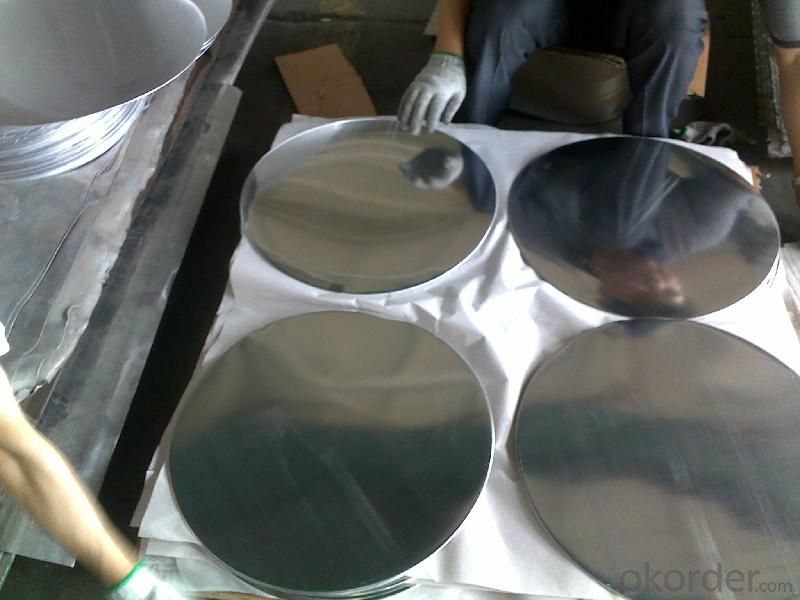

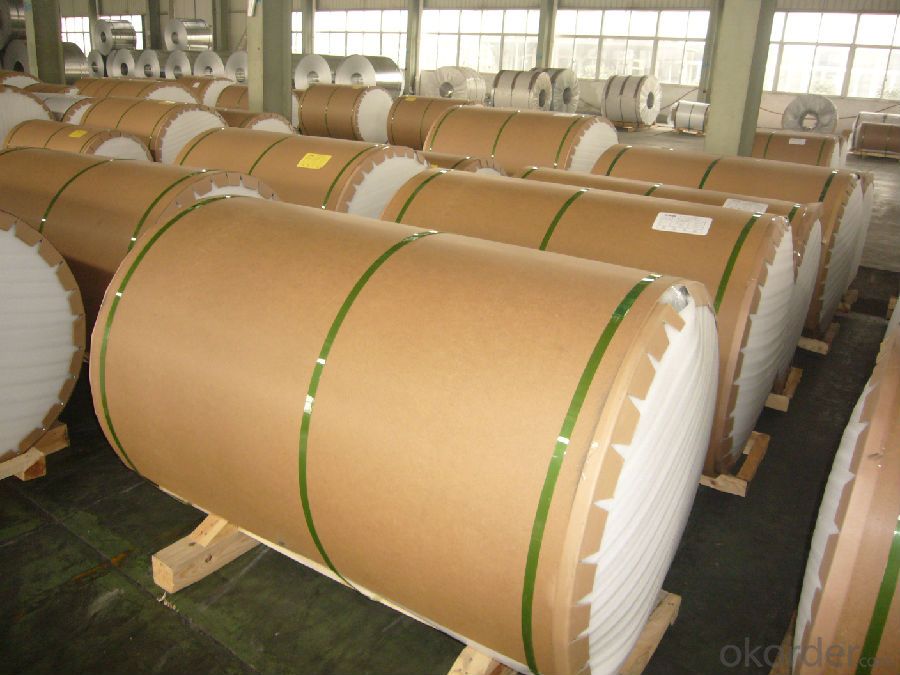
4. Product Specification of Continuous Casting Aluminium Strips for Food Cookware
| Alloy | Temper | Rolling | Thickness | Width |
| AA1050 | F | Hot Rolled | 0.2MM-2MM | 1000MM-1500MM |
5.FAQ of Continuous Casting Aluminium Strips for Food Cookware
What is the quality standard?
---Usually our standard is GB3880-2006
What is the largest width?
---It is 2300mm
What is the MOQ?
---Usually we can accept 80 tons.
- Q:What are the environmental benefits of using aluminum sheets?
- There are several environmental benefits associated with using aluminum sheets. Firstly, aluminum is a highly recyclable material, meaning that it can be recycled repeatedly without losing its quality or properties. This reduces the need for mining and extraction of new aluminum ore, which can contribute to deforestation, habitat destruction, and water and air pollution. Recycling aluminum sheets also requires significantly less energy compared to producing new ones, resulting in reduced greenhouse gas emissions and a smaller carbon footprint. Additionally, aluminum sheets are lightweight, which makes them a more sustainable alternative to other materials such as steel or plastic. The use of aluminum sheets in various industries, such as automotive and aerospace, can help reduce the overall weight of vehicles and aircraft, leading to improved fuel efficiency and lower emissions. This is particularly important in the context of climate change and the need to reduce our dependence on fossil fuels. Furthermore, aluminum is corrosion-resistant, durable, and long-lasting, making it a sustainable choice for various applications. Its durability reduces the need for frequent replacements, thereby reducing waste generation. Moreover, aluminum sheets can be used in construction to improve insulation, leading to energy savings and reduced greenhouse gas emissions. Lastly, aluminum is non-toxic and does not release harmful pollutants during its production or use. This makes it a safe material choice for various applications, including food packaging and medical equipment. In summary, the environmental benefits of using aluminum sheets include its recyclability, lightweight nature, energy efficiency, durability, and non-toxicity. By choosing aluminum sheets over other materials, we can contribute to reducing resource extraction, energy consumption, greenhouse gas emissions, and waste generation, while promoting a more sustainable and environmentally friendly future.
- Q:Can aluminum sheets be used in outdoor environments?
- Yes, aluminum sheets can be used in outdoor environments. Aluminum is a highly versatile and durable material that is well-suited for outdoor applications. It has excellent resistance to corrosion, which makes it ideal for withstanding the elements such as rain, snow, and UV radiation. Additionally, aluminum sheets are lightweight yet structurally strong, making them suitable for various outdoor projects such as roofing, siding, and cladding. Furthermore, aluminum is non-combustible, making it a safe choice for outdoor environments. Overall, aluminum sheets provide a reliable and long-lasting solution for outdoor applications.
- Q:Can aluminum sheets be used for insulation jackets?
- Yes, aluminum sheets can be used for insulation jackets. Aluminum has excellent thermal conductivity properties, which allows it to effectively reflect heat and prevent the transfer of thermal energy. This makes it an ideal material for insulation jackets, as it helps to maintain temperature control and minimize heat loss or gain. Additionally, aluminum sheets are lightweight, durable, and resistant to corrosion, making them a practical choice for insulation applications.
- Q:Can aluminum sheets be laminated with other materials?
- Yes, aluminum sheets can be laminated with other materials. Lamination is a process where two or more layers of different materials are bonded together to create a composite material with enhanced properties. Aluminum sheets can be laminated with various materials such as plastics, fabrics, papers, or other metals using adhesive bonding or heat and pressure. This lamination process allows for the combination of the desirable characteristics of different materials, resulting in a final product with improved strength, durability, appearance, or specific functionality. Laminated aluminum sheets are commonly used in industries such as construction, automotive, aerospace, and packaging, where the combined properties of the laminated materials offer distinct advantages.
- Q:Can aluminum sheet be used for electrical bus bars?
- Yes, aluminum sheet can be used for electrical bus bars. Aluminum is a common material used in electrical applications due to its excellent conductivity and cost-effectiveness. It has a high electrical conductivity, comparable to copper, making it suitable for carrying high currents. Additionally, aluminum is lightweight and has good corrosion resistance, which makes it a preferred choice for bus bars in certain applications. However, it is important to consider the specific requirements and standards for the electrical system before selecting aluminum sheet for bus bars.
- Q:Can 101 aluminum sheets be used for roofing or siding?
- Yes, 101 aluminum sheets can be used for roofing or siding. Aluminum is a popular material for both roofing and siding due to its durability, lightweight nature, and resistance to corrosion. The use of aluminum sheets for roofing or siding provides a long-lasting solution that can withstand harsh weather conditions and requires minimal maintenance. Additionally, aluminum sheets are available in various thicknesses, including 101, allowing for flexibility in design and structural needs.
- Q:I just built a stone wall with illuminated glass features embedded, and to make them shine evenly, I had all sides but the visual one wrapped in industrial thickness aluminium foil. One week later, the foil has disintegrated. I have used type 10 Portland. What is going on?
- I believe your problem is that concrete acts as a fairly strong base (this is especially true of mortar mixes). It is well known that strong base will react with an active metal like aluminium and produce hydrogen gas as a byproduct. The representative reaction is: 2Al+6NaOH==2Na3AlO3+3H2, This reaction is fairly rapid and can even cause an explosive buildup of hydrogen gas in a non-ventillated area.
- Q:Can aluminum sheets be used for packaging?
- Yes, aluminum sheets can be used for packaging. Aluminum is a versatile and widely used material in the packaging industry due to its numerous advantageous properties. It is lightweight, strong, durable, and resistant to corrosion, making it an ideal choice for packaging applications. Aluminum sheets can be easily formed into various shapes and sizes, providing flexibility in design and customization. Additionally, aluminum is impermeable to light, moisture, gases, and microorganisms, ensuring the preservation and protection of the packaged goods. It is also a good conductor of heat, which allows for efficient heat transfer during processes like sterilization or pasteurization. Furthermore, aluminum is recyclable, making it an environmentally friendly packaging option. Overall, aluminum sheets are an excellent choice for packaging due to their excellent properties and versatility.
- Q:What are the different surface finishes available for aluminum sheets?
- There are several different surface finishes available for aluminum sheets, each offering distinct characteristics and aesthetic appeal. Some of the commonly used surface finishes for aluminum sheets include: 1. Mill Finish: This is the most basic surface finish and is achieved by leaving the aluminum in its as-rolled condition, without any additional treatment. It has a smooth and shiny appearance, but may have minor imperfections and is not as durable as other finishes. 2. Anodized Finish: Anodizing is an electrochemical process that creates a protective layer on the surface of the aluminum sheet. This finish enhances corrosion resistance, improves durability, and provides a wide range of color options. Anodized finishes can have a matte or glossy appearance. 3. Brushed Finish: This finish is achieved by brushing the aluminum sheet with a fine abrasive material, creating a textured pattern. This finish is commonly used for decorative purposes and provides a unique and attractive appearance. 4. Polished Finish: Polishing the aluminum sheet using abrasive materials creates a smooth and reflective surface. This finish is often used for decorative purposes and gives a high-end, mirror-like appearance to the aluminum. 5. Embossed Finish: Embossing is a process that creates raised or recessed patterns on the surface of the aluminum sheet. This finish is commonly used for decorative purposes, as it adds texture and visual interest to the material. 6. Powder Coated Finish: Powder coating involves applying a dry powder to the aluminum sheet and then curing it under heat. This finish provides a durable and weather-resistant coating, and is available in a wide range of colors and textures. 7. Patterned Finish: Patterned finishes are achieved by imprinting different patterns or designs on the surface of the aluminum sheet. This finish is often used for architectural applications and adds visual interest to the material. These are just a few examples of the different surface finishes available for aluminum sheets. The choice of finish depends on the desired appearance, functionality, and application requirements.
- Q:I may use the copper or brass for an inlay on a decorative piece of aluminum I'm working on.....
- Melting Point Of Brass
1. Manufacturer Overview |
|
|---|---|
| Location | |
| Year Established | |
| Annual Output Value | |
| Main Markets | |
| Company Certifications | |
2. Manufacturer Certificates |
|
|---|---|
| a) Certification Name | |
| Range | |
| Reference | |
| Validity Period | |
3. Manufacturer Capability |
|
|---|---|
| a)Trade Capacity | |
| Nearest Port | |
| Export Percentage | |
| No.of Employees in Trade Department | |
| Language Spoken: | |
| b)Factory Information | |
| Factory Size: | |
| No. of Production Lines | |
| Contract Manufacturing | |
| Product Price Range | |
Send your message to us
Continuous Casting Aluminium Strips for Food Cookware
- Loading Port:
- Shanghai
- Payment Terms:
- TT OR LC
- Min Order Qty:
- 2 m.t.
- Supply Capability:
- 20000 m.t./month
OKorder Service Pledge
OKorder Financial Service
Similar products
New products
Hot products
Related keywords
